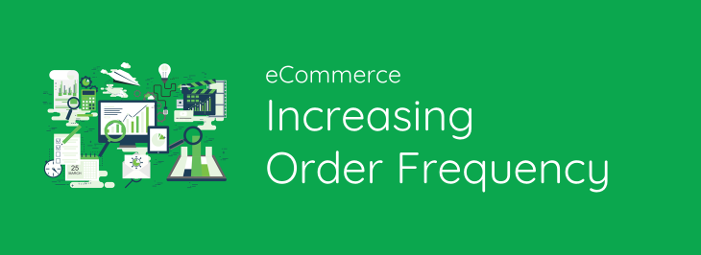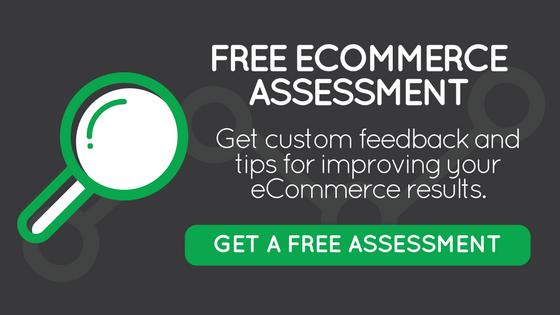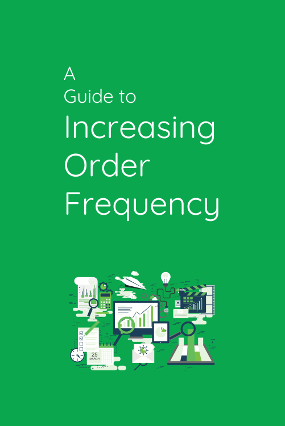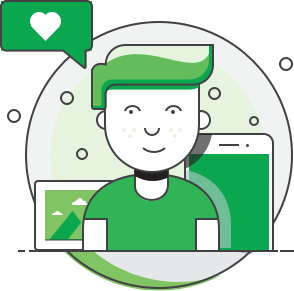
When looking to increase the value of each customer, it is important to build strategies that improve your interactions with a given individual. You want people to come back more frequently to purchase than they currently are. The more often a customer purchases, the higher your average customer lifetime value (CLV) will be and the more you can afford to spend on a qualified lead.
Proven eCommerce Marketing Tactics to Help Increase Purchase Frequency
- Email Marketing
- Retargeting
- Loyalty Program
- Customer Service
EMAIL MARKETING
Nurturing the right customers, with personalized content and offers at the right time will increase the engagement and conversion rates for your contacts. Email is one of the most powerful tools that a company has for a consistent opportunity to get in front of their customers with influential marketing. However, companies have to be careful to come up with a customer-centric strategy that isn’t going to have customers wishing to opt-out of being on the email list or marking messages as “spam.”
-
Abandoned Carts:
More than two-thirds of all carts are abandoned and an estimated 75% of those customers leave with the intent to return, according to data compilation from EY Studios. Additionally, nearly half of all cart abandonment emails are opened and 1/3 of those who open their cart reminder emails return to make a purchase. You can offer enticing promo codes if customers return to purchase, but consider establishing a cap so that your visitors are sent reminders too often or taking advantage of your promo offers. One of the biggest reasons for cart abandonment is being surprised at the cost of shipping. Consider clarifying shipping on your site with a flat fee or offering free shipping after a certain order size.
-
Differentiated Contact Lists:
In order to have an effective email campaign, you need to be sure you are sending out the right content to the right recipients. You will want to sort your contacts by where they are at in the buyer’s journey, location, age, position, past activity/purchases and more. If you are sending out a welcome email, you don’t want it to go to a loyal customer. On the other hand, if you are sending out information to spotlight a product, you don’t want to send it to a new customer that hasn’t bought into your brand yet or to a customer that just purchased that product. Differentiating your lists will help keep your emails relevant.
-
Re-Engagement:
When customers have gone from loyal to cold, you will want to reignite the spark that gets them excited about your brand again. Approximately 25% of your email list will decay each year, becoming inactive and yet remaining subscribed. This can hurt your engagement rates. HubSpot sends out a voluntary unsubscribe email that sweetly explains they don’t want to offer content that isn’t interesting. They explain how long it’s been without interaction and that they are stopping all tips emails and only sending out product emails relevant to direct usage. A simple button at the end of the engaging email allows readers to easily stay subscribed if they wish not to be removed. Other brands send out special offers as a “We Miss You!” campaign to pull users back to the brand. You’ve spent a lot of work and budget dollars on acquiring new leads and converting them, don’t let great customers fade away without an effort to keep them engaged.
-
After 1st Order:
When your customer makes a first purchase, you want to encourage a repeat buy. At least half of your customers (50-60%) will only make one purchase. Create a list of new customers and then send out 3-5 emails over a given period of time to encourage engagement. You can offer a coupon code to share with a friend, you can work to convert your new customers to join you on social media and you can send product support (like how-to tutorials, FAQs and supporting products they may have an interest in). You should differentiate your list even further for additional emails based on the specific products that each new customer chose to purchase or look at before purchasing. Once your contacts make a second purchase, they should automatically be removed from the criteria for this list and moved to another list for 2nd-time buyers.
-
After 2nd Order:
When your customer makes a second purchase, you want to keep working towards creating a regular customer. You want to capitalize on the momentum and start cultivating your customer to make a third order. Depending on your business, you might have specific products that are likely to be included in the third sale, or you may base your emails entirely on the purchases that your customer has already made. Make sure you space your emails out so that your approach doesn’t feel obnoxious or salesy. You may wait a couple days after sending the 2nd purchase thank you email before sending out any other nudging emails. After a certain time frame, you want to assume that your customer is not engaging in your attempts to prompt the 3rd purchase. If your customer does make another purchase, they should be moved from this list to the 3rd order list.
-
After 3rd Order:
Once you’ve achieved the third order from a customer, you want to move them to a list that continues to narrow down their personal likes and interests. The goal after the third order is to create a loyal customer that buys into the brand. A loyal customer will think of your brand first when they have a need, preferring to work with your company. You will want to encourage engagement outside of purchasing, while continuing to provide value that will keep your customer excited about your brand. Use your loyal customers to get insightful feedback, improving your approach to increase loyalty to the point of advocacy.
-
Customer Brand Advocate:
When it comes to loyal customers, they can be a huge asset to your business. Brand advocates are naturally led to share your brand to friends and family and stand up for you in social conversations. Each customer that shares with their circle will extend brand recognition far beyond your reach. Word-of-mouth recommendations are also without question the most effective method to convert new leads—specifically, recommendations coming unsolicited from trusted friends or family.
-
Store Events and Dates:
Emails can help promote special events, product launches or your company anniversary. While you don’t want to get company-centric, you can certainly highlight important dates to boost engagement and help customers know what your brand has been busy doing.
-
Newsletter:
A regular newsletter can be used to highlight specific stories, products, events or value that you deem important to your customers. Keep your newsletter from focusing on products alone, but make sure you take full advantage of product spotlights by personalizing the features based on the interests of your customers. Always have a specific goal in mind so that your newsletters have a conversion focus.
RETARGETING
You want to stay in front of your customers with ads that retarget visitors. You can use PPC (pay per click) ads, promoted Facebook posts and AdRoll to target customers. You can use retargeting advertising platforms (e.g., Google Adwords, AdRoll, Criteo) to target customers who have previously visited your website and have at least an initial interest in what you offer. When a customer abandons their cart on your site, they are 70% more likely to convert when retargeted. You can use images of products that your visitors have clicked on and even offer special promotional deals to further entice a return visit.
LOYALTY PROGRAM
Create a loyalty program that rewards order frequency to encourage customers to return sooner. Your loyalty program may offer free shipping, discounts, free gifts or special opportunities, based on what you believe your customers will most value. Before even establishing the program, you need to determine what your end goals are and what timeframes you will give to get results. Your program should target users differently based on spending habits, purchase amounts and even specific product interest. The goal of a loyalty program is to select ideal customer behavior and encourage more of it.
CUSTOMER SERVICE
Great customer service and easy return policies are what encourages customers to return frequently for purchases. You need to ensure customers are encouraged to purchase by having a supportive system that makes them feel like a valued part of your company. Without great customer service, you will struggle to have brand advocates, loyal customers or even frequent buyers.
Increase the frequency of purchases with your customers and you will increase the value of each acquired lead. Capitalizing on these conversions by increasing the value of each one will help you drastically improve your process with more money going to retained customers and increasing the organic way you get your leads.
Download the full report.
Similar Posts:










